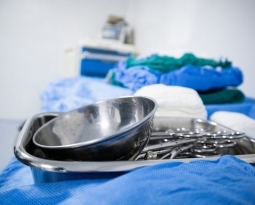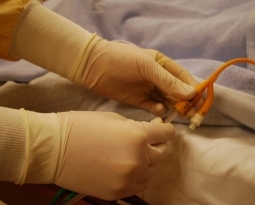Indiana Patent of the Month – September 2020
Indiana-based Biomet Manufacturing (Zimmer Biomet) is combining biology and technology with its patient-matched surgical navigation systems. The company received a patent for its software program, which recreates a three-dimensional model of a patient’s anatomy from a scanned image. Using this model, the system then develops a surgical component in the optimal shape, specific to the patient’s body and needs.
Surgical navigation systems, also known as computer assisted surgery systems or image guided surgery systems, shows the real-time position of instruments and patient anatomical structures. They help surgeons to guide surgical instruments and implant medical devices. For example, surgical navigation systems are often used to measure the size and shape of a bone before creating a prosthetic implant.
Typically, it uses a computer, with patient imaging from MRI, CT fluoroscopy. With Zimmer Biomet’s invention, the pre-operation scan is uploaded to the software. The program develops the three-dimensional model, on which it can locate and identify anatomical landmarks on the patient’s anatomy. These anatomical landmarks are then analyzed, with specific surgical information (i.e. about the surgery about to take place) and the software develops a prototype design of a surgical component that would best fit within the patient. A surgeon approves this design, and sends it to be developed, to then be used in surgery.
To better plan, track and navigate surgical instruments, tools and devices, surgeons often use tracking arrays, or reference arrays. Because Zimmer Biomet’s surgical components are custom-made, they can be manufactured with a reference array on the surface, again specific to the patient’s anatomy. So, when this piece is used/implanted, it assists the surgeon on where other anatomical landmarks are. This makes the surgery process easier to navigate, and therefore quicker and safer.
Are you developing a new product or process? Did you know your R&D experiments could be eligible for the R&D Tax Credit and you can receive up to 14% back on your expenses? Even if your development isn’t successful your work may still qualify for R&D credits (i.e. you don’t need to have a patent to qualify). To find out more, please contact a Swanson Reed R&D Specialist today or check out our free online eligibility test.
Who we are:
Swanson Reed is one of the U.S.’ largest Specialist R&D tax advisory firms. We manage all facets of the R&D tax credit program, from claim preparation and audit compliance to claim disputes.
Swanson Reed regularly hosts free webinars and provides free IRS CE and CPE credits for CPAs. For more information please visit us at www.swansonreed.com/webinars or contact your usual Swanson Reed representative.

















